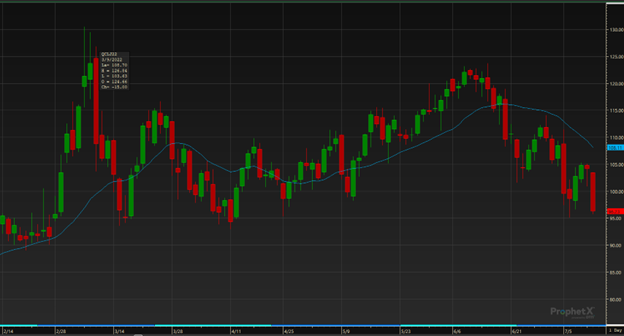It has been over 4 months since Russia invaded Ukraine late February and crude oil prices are finally close to where they were pre-war, but where do we go from here?
WTI crude oil prices are trading sharply lower today, down $7.86 at $96.23/barrel. Before Russia invaded Ukraine on February 24th, crude oil prices were trading in the $92/barrel range. Therefore, we are still not exactly at pre-war levels, but we are 26% off the peak from early March when we traded above $130.
Why is this happening? A lot of economists believe that we have hit “peak inflation” in commodities amidst the slowdown in the economy. Lumber prices have fallen over 50% from their highs, copper has fallen over 27%, and wheat has fallen over 14%. The price of the U.S. dollar is also hindering commodity prices. The dollar is trading at highs not seen since 2002. When the price of the dollar is high, it costs more to buy a commodity. Lastly, China has re-imposed COVID-19 lockdowns in major cities like Shanghai which is decreasing the demand outlook for crude oil. Therefore, the slowdown in the economy, the high value of the U.S. dollar, and lockdowns in China all have put pressure on the price of crude oil.
Where do we go from here? Despite being in a slowdown, we are not out of the woods yet to continuously reduce oil prices. U.S. refineries are still nearly maxed out on production capacity, operating at 94%. Also, Europe is in a dire position for when winter finally comes. The continent is behind on storing natural gas and diesel fuel to feel comfortable for cold spells and potential shutdowns in natural gas supply coming from Russia. As a result, there may be immediate and sporadic inelastic demand for crude oil and distillate fuel from the U.S. in Q42022 and Q12023. Unless we have a severe economic recession, the physical markets still indicate fuel supply may become constrained again during the winter which will support prices. Therefore, we anticipate that prices may find support by the time we hit Fall weather.
For the long term, we still need to improve refining capacity domestically to significantly lower prices absent a demand shock from a long, sustained recession.




